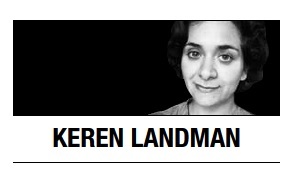 During my first week of medical school, we watched a video documenting the life and death of a child with severe spina bifida.
During my first week of medical school, we watched a video documenting the life and death of a child with severe spina bifida.
Her parents had been aware of her prognosis long before birth but did not terminate the pregnancy; they cared for her until her death, when she was 8. Speaking years afterward, they regretted nothing. They saw her as a gift from God, to be valued and loved as much as their other children.
I distinctly remember sitting in the lecture hall and thinking, “You people are out of your minds.” I’d grown up with a sibling who had severe autism. His disability had never felt like a gift.
Instead, it ruined birthdays, strained family gatherings and doubled my parents’ expectations of me. I’d learned to force a beatific smile when told how much patience I must have learned, but until that film, I’d never realized some people weren’t faking their smiles. For some people, disability was a source of joy.
I’ve grown and changed since then, but the way we talk about disabilities in the news has not.
The catastrophic tone in recent microcephaly depictions is only the latest inaccurate and overwhelmingly negative representation of the disability experience. Microcephaly is a symptom of a variety of genetic, infectious, and toxic disorders, and is diagnosed when an infant’s head circumference is below average. Of all babies with microcephaly, 15 percent go on to have typical intelligence, while the remainder may have a range of mental and physical disabilities, depending on the cause.
The news media has churned out stories like the recent CNN dispatch in which a Brazilian physician says, unchallenged, affected newborns “will require special attention their entire lives. It’s an emotional stress that can’t be imagined.”
Disability activists say such florid coverage is bad for parents, people with disabilities and the rest of us too.
Journalists communicating negatively slanted stories might see themselves as simply telling it like it is. A Washington Post video — played by clicking a picture of a screaming baby — shows a brow-furrowed physician, then displays the text, “(babies are) born with … brain damage” while playing a vaguely nail-biting dirge. With so many grim-lipped doctors and anguished parents, it’s only natural to assume the worst.
But journalists are responsible for transcending assumptions, says Kristin Gilger, Director of the National Center on Disability and Journalism, which maintains a disability style guide for reporters. In the case of microcephaly, that means exploring the spectrum of associated anomalies. The disease has been presented as inevitably debilitating to the extent that the United Nations has demanded affected countries reconsider abortion bans — when in fact, almost 30 percent of children with microcephaly in one study were able to attend mainstream schools.
We also have a responsibility to use language that avoids implying people with disabilities are mistakes. If there’s a unifying rule to write by, says Gilger, it’s to use “people-first” language. In most cases, people with disabilities prefer to be called, well, people with disabilities — not “disabled people.” Being characterized by a disability can make it feel like that’s all people notice.
Fear of offending vocal activist communities might scare off journalists from covering disability stories. However, it’s critical that those stories be written. “The media tends to determine attitudes toward disability,” says Rosemarie Garland-Thomson, English professor and Disability Studies Initiative co-director at Emory University. “And the language is so negative about … the human variations we think about as disability.”
Telling balanced stories that show a range of experiences and relationships for people with disabilities is a step toward changing public attitudes toward disability — itself an important step toward increasing accessibility, employment opportunities, and social and romantic prospects.
Perhaps most importantly, broader coverage of disability experiences could dramatically reduce anxiety among new parents of children with anomalies. The media’s persistent depiction of microcephaly as a certain cause of severe debility must be hugely demoralizing to families of children whose futures are uncertain, and for whom parental morale can make a big difference.
And for expectant parents deciding whether to terminate pregnancies on the basis of fetal anomalies, a prognosis untarnished by stigma and irrational expectations increases the likelihood of making the best choice to suit their emotional and physical resources.
Katherine Schneider, a disability activist and retired psychologist who is blind, notes the potential for people with disabilities to contribute to the world. Still, she says, “I acknowledge people’s right to choose. I just hope they choose on the basis of good, balanced information rather than fear.”
By Keren Landman
(Tribune Content Agency)
Keren Landman is a physician trained in internal medicine, pediatrics and infectious diseases. She wrote this essay as part of the Dallas Morning News’ partnership with the Munk School of Global Affairs at the University of Toronto, where she is a fellow. Reach her at klandman@gmail.com. — Ed.

